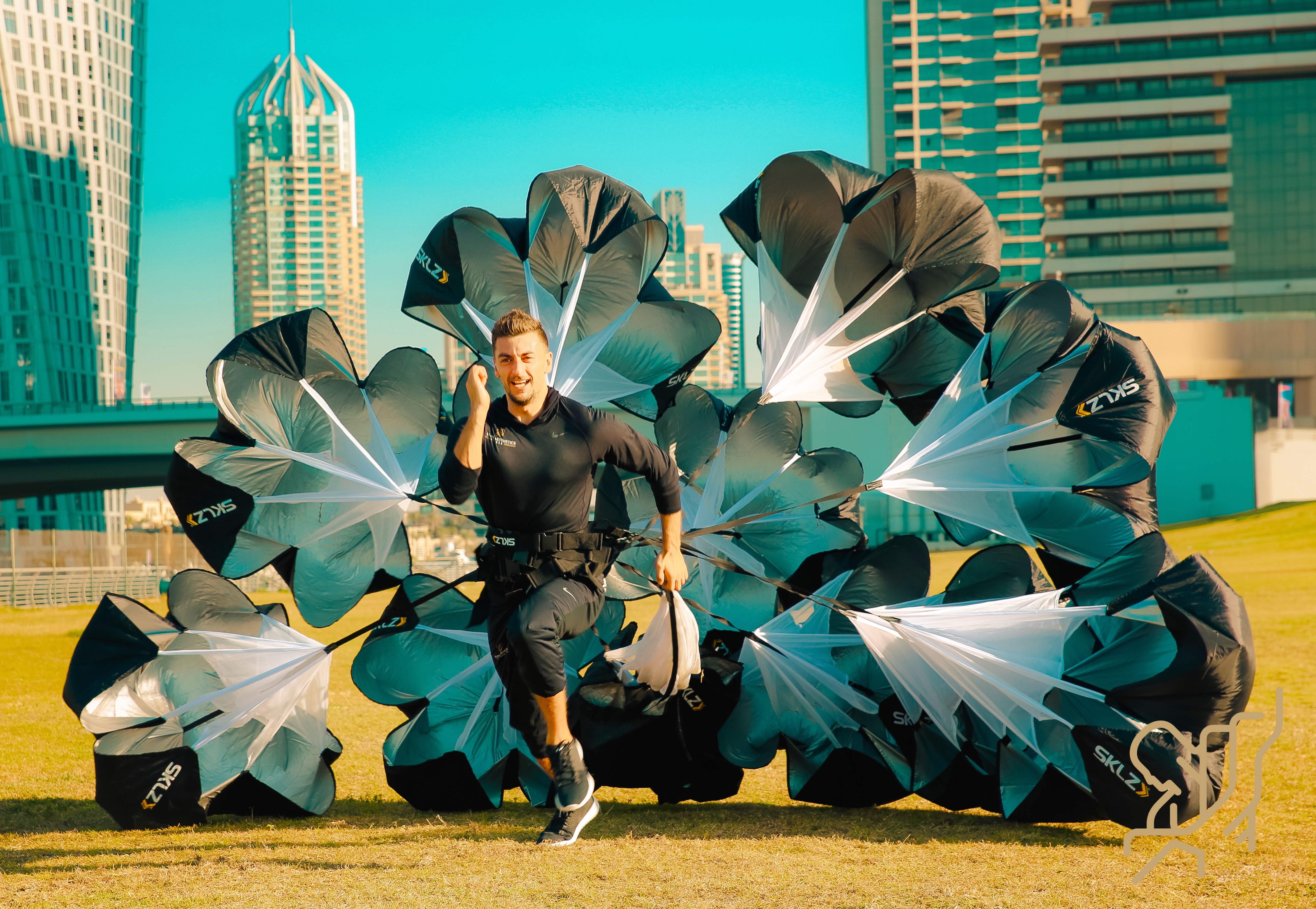
BENEFITS OF PARACHUTE SPRINTS
At Elite, our signature session is our “Chutecamp” incorporating a series of sprint intervals which are already taxing enough, let alone with a parachute, or two (or three!) attached behind you! Of course it makes a good Instagram pic, and looks rather cool with a parachute as you sprint into the wind – but why is this our trademark training tool, and what is this training method doing for you?
Adding a parachute adds an external element of resistance that the body has to overcome. This resistance encourages the muscles of your legs – your glutes, your hamstrings and your quadriceps, to contract more effectively and efficiently to increase your explosiveness to try and maintain your speed, despite the increasing level of drag acting behind you.
The parachute doesn’t interfere with the start of the interval, it’s only as you get up to your top speed (Your “Drive Phase”) when the parachute is starting to catch that wind and you start to feel that “drag”. This is when you’re coming to the end of the first 10 seconds or so of your sprint, when you’re starting to exhaust your CP (Creatine Phosphate) energy stores involved in the production of energy via your Phosphagen (anaerobic) energy system, that is drawn upon for this kind of explosive exertion. When the Creatine Phosphate is depleted, the body must then call upon other energy systems to sustain the continued activity. So when you’re starting to feel that drag increase, you are also beginning to shift in your energy and starting to draw upon the Glycolisis System – Another Anaerobic system also known as the “Lactate System”, which can last for between 1 and 3 minutes of High intensity activity. This will be the system used throughout the remaining duration of your sprint. This energy system is associated with Lactate and lactic acid that is produced in the body as a result of this type of training. At high intensity, the body produces lactic acid which enters the bloodstream, which is then cleared by the liver – called “lactate clearance”. When the level of lactic acid rises in the blood, the level of acidity too rises which inhibits the use of fatty acids for energy production, which increases the body’s reliance on carbohydrates and glycolysis. As blood-lactate levels continue to rise and the carbohydrate stores become depleted, the muscles fatigue, drawing your performance to a halt. When you get to the end of your sprint, you feel like you couldn’t run a step further – this is because of the lactic acid being produced as a result of the absence of oxygen to assist in the continuous production of energy, as is when performing aerobic exercise.
So, your body is already fighting to try and clear this lactate produced with your normal sprint alone, so by adding the parachute, which is increasing the difficulty with the extra “drag” behind you, you are gritting your teeth and putting your mind in your muscles to maintain your top speed as if you weren’t wearing the parachute, so increasing your speed and improving your lactate clearance rate by forcing the body to keep up with your situation and your goals to maintain that speed.
The addition of the parachute, in short, improves what is called the “drive” phase of your sprint. You remove the parachute after training consistently with it, you remove the added difficulty, and you will notice a significant improvement in your muscular an cardiovascular fitness.
